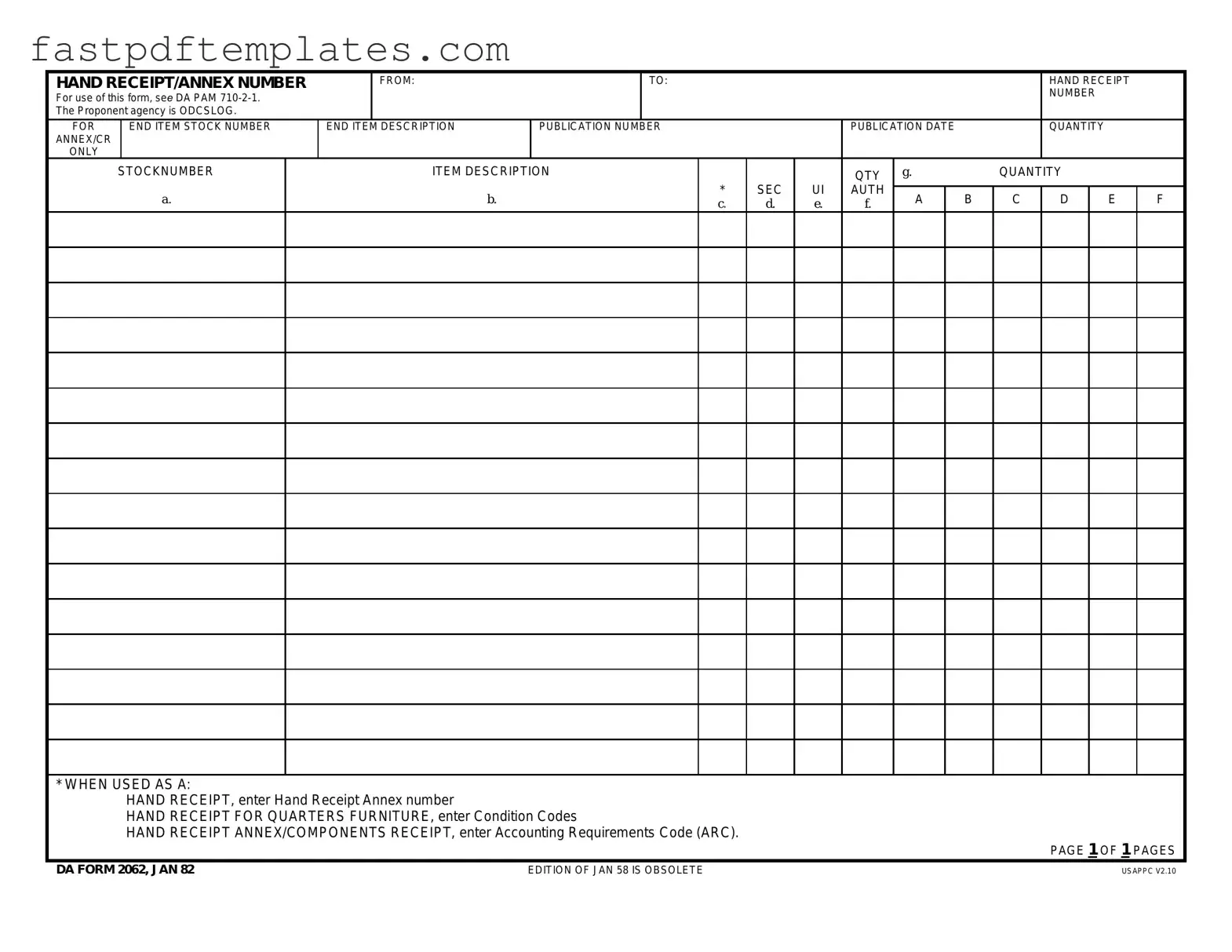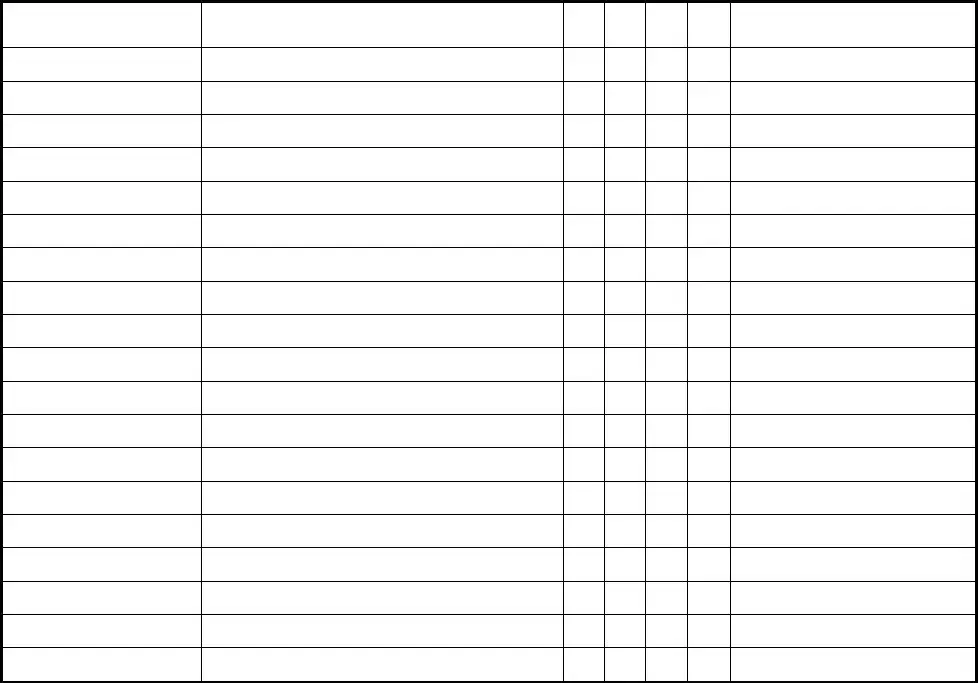The DA Form 2062, commonly known as the Hand Receipt, is similar to the Standard Form 30 (SF-30) in that both documents are used for tracking and managing property. The SF-30 is primarily utilized for contract modifications, while the DA Form 2062 focuses on the receipt and accountability of government property. Both forms require detailed descriptions of the items involved, ensuring that all parties are aware of what is being transferred or modified. This clarity helps maintain accurate records and accountability, whether in a contractual or property management context.
Another document that shares similarities with the DA Form 2062 is the DA Form 3161, which is used for the temporary transfer of property. Like the Hand Receipt, the DA Form 3161 includes essential details such as item descriptions, quantities, and the parties involved in the transfer. The main difference lies in the temporary nature of the DA Form 3161, whereas the DA Form 2062 is often used for more permanent transactions. Both documents serve to ensure that the transfer of property is well-documented and that accountability is maintained throughout the process.
The DA Form 3749, also known as the Equipment Receipt, is another form that resembles the DA Form 2062. This document is specifically used for the issuance of equipment to personnel. Similar to the Hand Receipt, it requires information about the items being issued, including descriptions and quantities. Both forms are essential for maintaining accurate records of property issued to individuals, ensuring that all equipment is accounted for and properly managed.
In addition, the DA Form 2404, which is used for equipment inspection and maintenance, shares some characteristics with the DA Form 2062. While the primary purpose of the DA Form 2404 is to document the condition of equipment, it also includes information about the equipment itself, such as its description and identification number. Both forms help ensure that there is a clear understanding of the status and accountability of government property, albeit from different perspectives—one focusing on receipt and the other on condition.
The DA Form 200, known as the Financial Liability Investigation of Property Loss, is another document that aligns with the DA Form 2062 in terms of property accountability. The DA Form 200 is used when property is lost, damaged, or destroyed, requiring a detailed investigation. While the Hand Receipt focuses on the transfer of property, the DA Form 200 addresses accountability issues that arise from property loss. Both forms emphasize the importance of keeping accurate records and ensuring that all transactions involving government property are properly documented.
Another similar document is the DA Form 450, which is used for the receipt of personal property. This form, like the DA Form 2062, includes details about the items being received, including descriptions and quantities. The DA Form 450 is often used in situations where personal property is being transferred to individuals, making it similar in function to the Hand Receipt. Both forms play a crucial role in ensuring that property transfers are documented and that accountability is maintained.
The DA Form 1687, which serves as a Notice of Delegation of Authority, also has similarities with the DA Form 2062. While the primary purpose of the DA Form 1687 is to designate individuals authorized to request and receive property, it includes information about the items involved. This connection to property management aligns it with the Hand Receipt, as both documents help clarify who is responsible for property and ensure that proper procedures are followed in managing government assets.
Lastly, the DD Form 1348-1A, which is a requisition and invoice/shipping document, shares characteristics with the DA Form 2062. Both forms are used in the context of property management, with the DD Form 1348-1A focusing on the requisition and shipping of items. While the Hand Receipt documents the receipt of property, the DD Form 1348-1A is used to initiate the process of obtaining that property. Both documents are essential for maintaining accurate records and ensuring that property transactions are properly managed.


